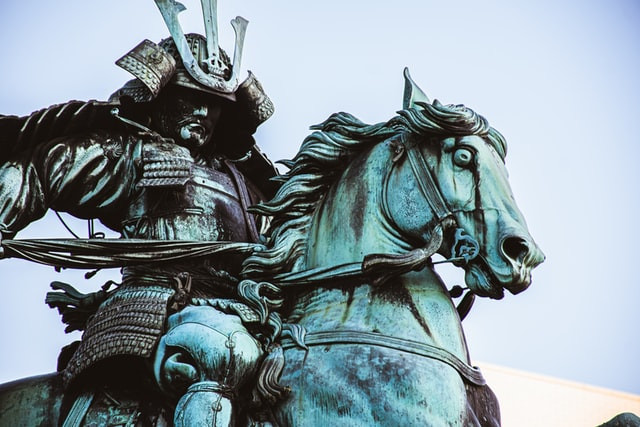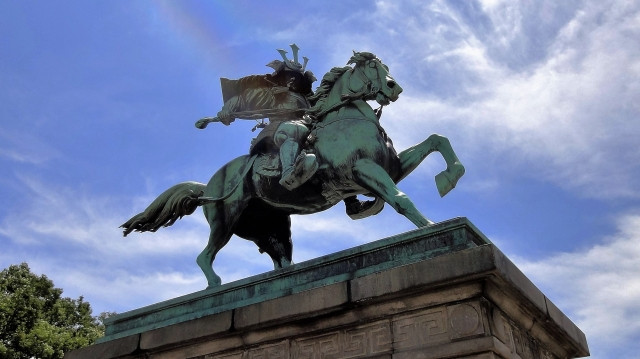Japanese history has witnessed the rise and fall of both lords and warriors in their endeavor for power. Before Japan was unified, the country was ruled by several clans and feudal lords. For those interested in learning this portion of Japanese history, the Medieval Period would be a good start.
Table of Contents
- A Brief Intro to the Medieval Period of Japan
- The Kamakura Period: New Types of Leaders and Power Dynamics
- The Muromachi Period
- The Sengoku Period
- Unification of Japan: The Three Unifiers of the Medieval Period
- Accomplishments and Impact of the Medieval Period
- Summary
A Brief Intro to the Medieval Period of Japan
The period between 1185 and 1600 is what is known as the Medieval Period in Japan. However, it is a little rare for it to be called this overall, because it encompasses the Kamakura Period, Muromachi Period, and the Azuchi Period (with the famous war period, the Sengoku Period, also falling within this timeframe), and each smaller period is usually discussed separately and in great detail. In this article, we will briefly examine the overall key players and main events, as well as significant contributions in history of this time.
To greatly simplify the Medieval Period, three major things happened.
-
The shogun became the leaders of the country - the start of the Medieval Period is characterized by the rise of the samurai or warrior class, which gradually replaced the aristocratic class, or the ruling nobles
-
The Sengoku Period - Otherwise known as the Warring States period, civil war broke out and warlords and their armies fought over territory throughout the country.
-
Unification of Japan as one country - One warlord, his army and his successors were able to conquer the rest and bring together the entire country.
We’ll take a look at each of these pieces as well as how during this time, key figures in Japan’s history emerged, as well as major cultural accomplishments that made their mark on Japan as it is today.
※ Ancient History Encyclopedia, "Medieval Japan"
Writer's Pick
The Kamakura Period: New Types of Leaders and Power Dynamics

Key Figure: Minamoto Yoritomo, the first Shogun
The Medieval Period of Japan began in 1185 with the Kamakura Period after Minamoto no Yoritomo finally defeated the opposing Taira clan during a battle that year in Dannoura. Thereafter, Minamoto established the first Japanese shogunate in 1192 under his leadership as the first Shogun (or military ruler) in the town of Kamakura, notable for its distance from Kyoto, the home of the emperor.
And who was this emperor? It could be concluded that the presence of a powerful shogun with a strong army of warriors during that period posed a legitimate challenge to the reigning emperor, Go-Toba, who held court in Heiankyo (Kyoto). Maintaining stability and peace all over Japan meant keeping a political alliance between the two existing recognized leaders, although one clearly had the power now.
Shogun & Regents & Feudalism
The Shogun, however, did not retain power and in an ironic turn of events, became puppets themselves, much like they had taken power from the emperor. The real leaders were the regent shogun from the Hojo clan.
During this time, the shogun gave power over provinces to governors, called shugo, and responsibility over territories to stewards, called jito. This was the beginning of a feudal system in Japan that would carry on throughout the Medieval Period, with these groups of people gaining more and more power and their role shifting as time went on.
Key Event: Mongol Invasions
Foreign invasions, political unrest and natural disasters beset Japan during the Kamakura Period. In 1274, the Mongols invaded Japan but were repelled. The next invasion occurred in 1281 and likewise resulted in the Mongols’ failure, once more proving Kamakura’s military strength. But much of the defeat of the Mongols is accredited to the extremely violent hurricanes the Japanese called kamikaze or “divine winds” which destroyed many of the enemy ships.
The Muromachi Period

Key Figure: Ashikaga Takauji
Ashikaga Takauji was instrumental in ending the Kamakura Shogunate, by joining the side of the very people from whom he was supposed to protect the Kamakura Shogunate. He then established the Ashikaga Shogunate in Kyoto, essentially weakening the imperial court’s power considerably by being in the same location. While Ashikaga and his descendants didn’t lose their power to regent shogun like Minamoto Yoritomo’s descendants, the growing power of the daimyo proved to be a challenge.
The Daimyo
The daimyo who ruled provinces as descendants of the jito stewards from the Kamakura Period experienced relative freedom to manage their territories. Agriculture and commerce flourished during this period in spite of the lack of a central government looking over their lives and activities. This led to them gaining wealth and power, and soon, the Ashikaga Shogunate relied on the daimyo being loyal to retain power. However, the daimyo began feuding between themselves, giving way to the beginning of the Sengoku Period and eventually the end of the Ashikaga Shogunate.
Key Event: The Onin War
The Onin War broke out between the people supporting the two possible descendants of one Ashikaga shogun: the Hosokawa clan who backed the shogun’s brother as the next heir, and the Yamana clan who backed the shogun’s newborn son and his mother who wanted to act as regent until her son was grown. The result of the war was uncontrolled chaos and Kyoto was left in ruins. It also destroyed the credibility of the Ashikaga Shogunate, and led to the daimyo of different clans, not just the two who started the war, continuing to fight in the Sengoku Period.
The Sengoku Period
This highly covered and romanticized period in Japanese history was a century of various clans fighting for control over territory throughout Japan. Lower class members of society who were not part of the samurai class armed themselves and began to fight. The period was marked by assassinations, betrayals and no clear winners, as strong clans couldn’t maintain their victories for long. However, after about one hundred years of fighting since the start of the Onin War, one warlord eventually stood out among the rest.
Unification of Japan: The Three Unifiers of the Medieval Period

Three key figures are said to be the unifiers of Japan: Oda Nobunaga, Toyotomi Hideyoshi and Tokugawa Ieyasu.
Oda Nobunaga
The almost one century of discord and chaos during the Muromachi Period finally ended with the rise of one powerful warlord, Oda Nobunaga, who was able to rule over a large portion of the country through his great military leadership and his elite force of samurai warriors. The army overran the Muromachi stronghold in Heiankyo in 1568 and ended the rule of Ashikaga Yoshiaki in 1573. The victory was key in the start of uniting the country under one leader again. However, Nobunaga was betrayed by one of his own, leading to his demise before he could see his plan carried through to completion.
Toyotomi Hideyoshi
Hideyoshi, one of Nobunaga’s loyal followers, defeated those that betrayed his master and oversaw Nobunaga’s plan to the end. He unified and ruled Japan with the aid of his large arm, succeeding by persuading more and more daimyos to join him. Under his control, a class system called the shi-no-ko-sho system emerged, which was a 4-tiered structure of society subdivided into strictly separate classes of citizens; namely, the warrior, the farmer, the artisan and the merchant.
Tokugawa Ieyasu
After the death of Toyotomi, the contest for supremacy between remaining leaders led to the rise of Tokugawa Ieyasu after he won at the Battle of Sekigahara in 1600 and eventually became the shogun in 1603. The establishment of the Tokugawa Shogunate marked the end of the Medieval Period as well as the start of the Edo Period.
Accomplishments and Impact of the Medieval Period

Throughout the medieval period, art, inventions, culture and so on flourished in the midst of the power struggles going on. Here are just some of the major cultural accomplishments and impacts of the era:
-
During this era, women were afforded more rights which included property ownership, divorce rights and even active roles as stewards and even involvement in military leadership.
-
Various sects of Buddhism became popular during the Medieval Period, including Zen and Nichiren, and had a huge influence on culture and architecture. Many of the historical temples at Kamakura that can be seen today were built during the Kamakura Shogunate and many castles were built during this period.
-
The samurai devoted their time to developing the tea ceremony, poetry and art in an attempt to refine their lives. These are still prevalent and preserved in Japan as respected forms of traditional culture.
-
Samurai armor during the battles became staples. The famous kabuto helmet still inspires people even in the modern day, such as with Darth Vader’s mask.
Summary

Looking at this very interesting era in the history of Japan helps people to acquire a deeper appreciation of the nation’s character; for within this slightly over 400-year widely-engaging chapter in Japanese history is contained many lessons that political leaders, writers, artists, architects and so on gain inspiration from even today. This article, hopefully, has given the reader a foretaste of the real experience of seeing the real Japan and living out the bountiful fruits of those years of prolonged chaos and intense struggles of the nation’s founders.


































